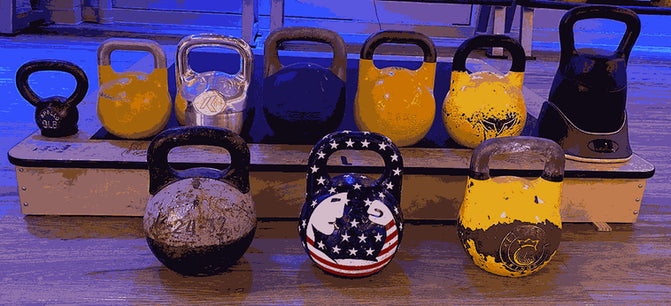What's Wrong With Kettlebells

Kettlebells weren’t designed for strength training. They originated as scale weights for weighing goods and haven’t changed much since.
The kettlebells in old Russian farmer’s markets gave their users super-human strength, stamina, and durability which led to those bored strongmen (gireviks) to lift them as feats of strength.
And that’s how kettlebells were brought into the world of weightlifting.
Kettlebells remained relatively unchanged until the 1960s when the Russians created the sport of kettlebell lifting (girevoy sport) and standardized the size and weights. Later, they introduced them into their national fitness program and military training, but despite the increased use and popularity, little was done to improve their ergonomics or functionality.
Soviet Russia was cold and hard and so were the kettlebells.

It seems the only changes to the kettlebell since its adoption into the fitness arena have been to either ease the manufacturing process, mass produce them more cheaply, or make them more sellable with nicer finishes (appreciated) or by adding gimmicky animal or character faces that look more at home on someone’s front porch during Halloween than in a gym (not appreciated).
The kettlebells with faces on them garner a special type of loathing from me because they make the kettlebell even more uncomfortable and actually dangerous. If they’re just for looks and you’re not going to use them, fine. But it’s as though there was an award for the worst designed kettlebell, and someone said, “hold my beer” and slapped a handle on a gargoyle head.
Honorable mention goes to some folks with zero fitness or kettlebell experience who discovered that kettlebells and fitness trackers were trending, so decided they should design their own version that includes both without ever using either, or consulting someone who does.
There are a few who’ve attempted to improve the ergonomics or functionality of the kettlebell. Kettlebell sport world champion Valery Fedorenko comes to mind; he created kettlebells with added indentations where the forearm would rest. This was a great idea and was even copied by Rogue and Kettlebell Kings, but the design was flawed. The indents were merely flat oval discs sliced out of the sphere of the kettlebell, and unfortunately, at the wrong angle.
Having gone through the process, I now know why they missed the mark. The CAD technology was not as good at the time. That coupled with the cost of R&D and working with a manufacturer in China made the final product not great.
Regardless, kettlebells are still awesome, so people still use them. No other piece of equipment combines strength, power, mobility, coordination and cardio training so seamlessly as the kettlebell.
That’s why many kettlebell lifters overlook its flaws while others have actually developed a masochistic love for the pain inflicted by these iron spheres.
Like a victim of abuse, a sort of Stockholm syndrome develops, and the user will make excuses for the kettlebell saying, “my technique was bad,” or “I shouldn’t be so weak.” The victim brushes off questions from their friends about bruised, broken and calloused forearms. “It was just one bad rep.” “It’s teaching me better technique.”
Meanwhile, the rest of the world who are unwilling to take the discomfort miss out on the benefits of the ballistic training you can do with a kettlebell that no other piece of equipment can match.

I have personally been rehabbed out of hypertension and a debilitating power lifting back injury by using kettlebells. Through the kettlebell classes at my gym, I’ve seen frozen shoulders fixed, more than 100% performance increases in our 21-day challenges and wimps turned world champions.
It is this ability to take the average person to superhuman that has caused me to make my life’s work dedicated to teaching people to use kettlebells. I’ve invested everything I’ve ever had in building Seattle Kettlebell Club, the largest kettlebell-dedicated gym in the world, prokettlebell.com, which is providing our kettlebell programming to people around the world, and development of the Pro Kettlebell.
The Pro Kettlebell is the culmination of my wife and I working with thousands of clients and learning their common complaints of the current kettlebells, as well as our experiences as kettlebell sport competitors and coaches.










